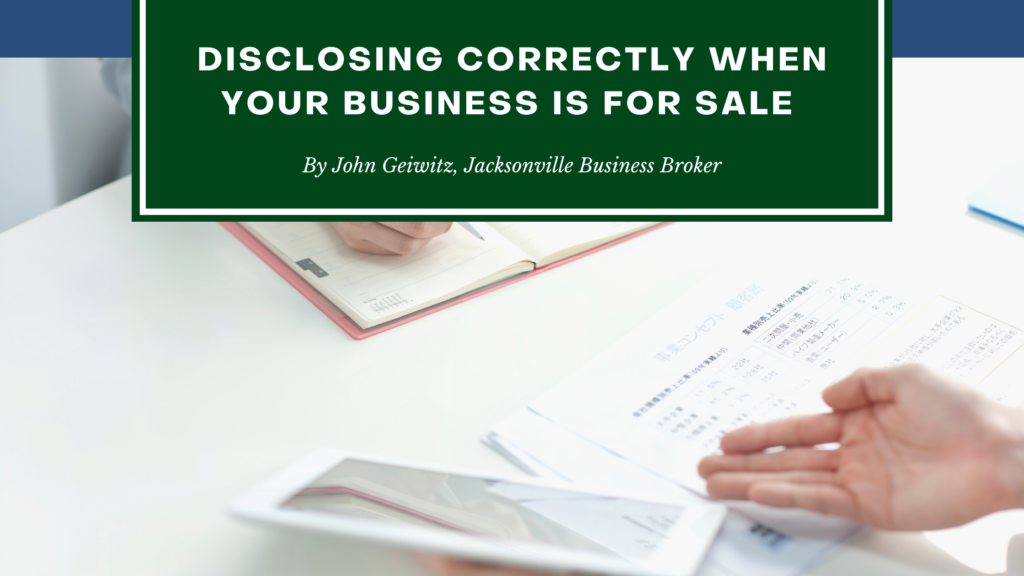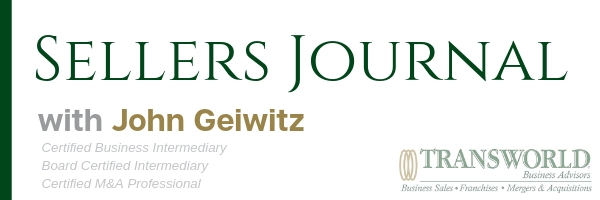
Part III: Disclosing Correctly When Selling Your Business
This is the third in a series of articles about confidentiality concern when your business is listed for sale.
- Timing
- Managing Uncertainty
- (this article) Disclosing correctly
In this first article, we discussed timing. The second article involved managing uncertainty including what and when to disclose. This third article is about the mechanics of disclosing correctly.
I am often asked, “How do you market a business and in doing so not disclose specifics before having an NDA signed?”
This too is a catch-22 situation.
With most “main street” listings (generally defined as an enterprise value of $5M or less) we mass market them on hundreds of websites to gain the most exposure. There is a bit of an art involved in this process. We share just enough to get the reader interested but not so much that he/she can figure out what the business is. Probably one of the most important elements to this part of the process is the involvement of the business seller pre-approving all information before anything is ever released.
There are basically 3 phases in properly disclosing a potential buyer for most businesses:
- After a potential buyer responds to an ad or a posting, they receive an NDA to sign, if the business requires more than $150,000 down, some additional information such as a personal financial statement “PFS” is required.
- Once we have the NDA executed, the next phase involves determining if the “need to know” criteria have been met. Need to know is critical! Just because someone has signed an NDA doesn’t mean that they are automatically entitled to all the details. This is where I have seen other business intermediaries completely lose control of the situation. What if the potential buyer is an employee, supplier or even worse, a local competitor? Do we have to disclose them just because they signed an NDA? Absolutely NOT! This is where a good business intermediary picks up the phone and asks a series of important questions before moving on to the next phase.
- So now we know your potential buyer is serious, understands the sensitivity regarding confidentiality, is not a local competitor (that you don’t want disclosed – selling to a local competitor is the topic of another article) is not a supplier or employee phishing to see if the ad was for your business, has the financial capability to actually purchase your business.. the list goes on. Now comes the real work, disclosure. What we say and how we say it is critical and it’s called (sorry for yet another acronym) a Confidential Information Memorandum “CIM”. This is where we find out if your business intermediary is earning his/her commission. The CIM contains the whole story – recasted financials, sales history and trends, equipment lists, job descriptions, and just enough other detail to take your potential buyer from interested to wanting to make an offer and buy your business!
If confidentiality has been managed properly, by this point we really don’t have a lot to be concerned about, except…
You accepted the offer and now your buyer is ready to move forward, wants to see tax returns and talk to your CPA, talk to your employees, visit with your customers and suppliers, learn all the details about what has made your business better than all of your competitors! We have entered the “due diligence zone”. How, when and what we disclose will make or break this deal and that is the topic of an upcoming article entitled “Managing Due Diligence”.
To subscribe and receive Part 1: Confidentiality and Part 2: Managing Uncertainty of this article, or to strategize your exit from your own business, please call 904-647-4755.



